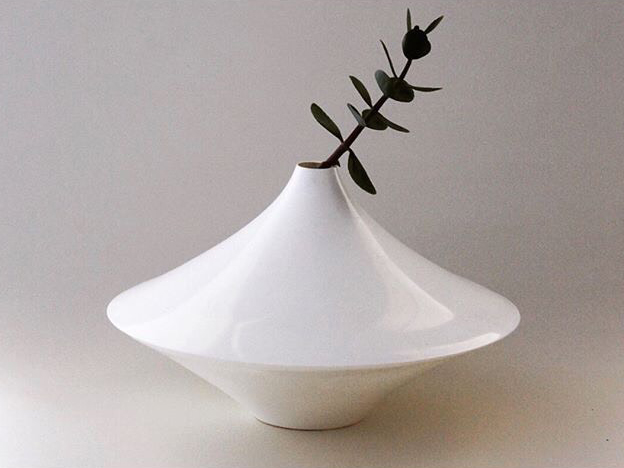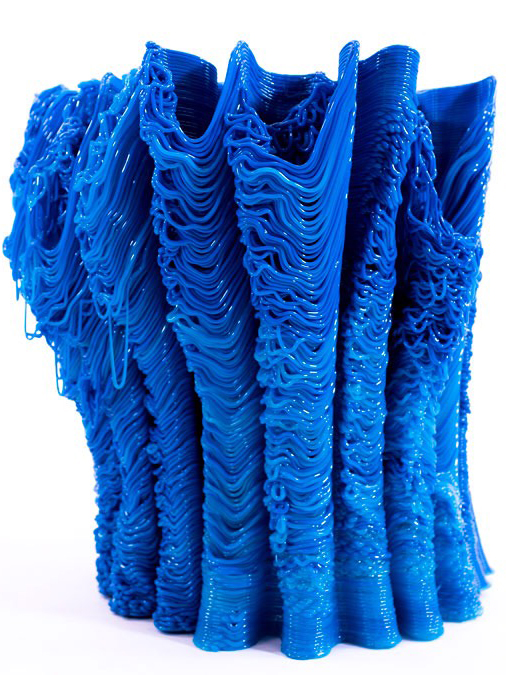This April saw five recent graduates travel to Milan to exhibit their work as part of the salone del mobile, the world’s largest and most prestigious design fair.
Exhibiting at the Salone del Mobile provided the perfect opportunity to experience and contribute to the latest and most creative work in the design world, as well as network with key players in the design industry.
For up-and-coming designers, to be noticed at the Salone del Mobile can be a career making moment.
2017 and 2018 graduates Fran White, Kristen Wang, Ivana Dancova, Leandro Jose Magat and Aimee Yuehui Lin each exhibited a design piece which was originally created in the Ex Lab: Experimental Design Lab, a graduate level elective at the Faculty of Architecture, Building and Planning.
The studio requires students to produce a major project in the form of a piece of furniture which has been developed through an intensive process of experimentation with materials, traditional craft methodologies and contemporary digital fabrication equipment to inspire unusual and beautiful finished pieces.
Encouraged by studio Leaders Jas Johnston and Adam Markowitz, the alumni submitted their work to the Melbourne Movement, an independent group set up to support local young designers, who were organising a contingent of Melbourne designers to exhibit in Milan.
All students undertaking the subject are encouraged to put their work forward for consideration at competitions and expos such as Fringe Furniture and VIVID, with many students receiving awards and recognition for their innovations.

Varyvases by Fran White
Materials: quick set resin, latex
VaryVases are a family of mass-customised vase objects made by rotational casting quick-set resin in an adjustable latex mould. This parametric mould allows the vase’s profile, size, number of openings and colour to vary, while the process of rotational casting creates thin, hollow, and curvaceous vase forms each time.
I was interested in designing a product that could be mass-customised. I wanted to make a product with all the efficiencies of mass-production, whilst ensuring each of the products would have their own unique design. Since finishing my degree, I have continued to work on the project, developing it into a range of vases.
Going into the Salone del Mobile, I didn’t know quite what to expect. It has been a great experience to understand more about how the design industry works in areas such as product, industrial and furniture design, as it is quite different to architectural practice.
It was also a good push to continue developing yourself as a designer. I have definitely come through this experience more inspired and driven to further develop my own design projects.
One of the most valuable parts of this experience was getting first hand feedback and interest in our work from others. Many people from different areas in design stopped by our booth, from educators, manufacturers, suppliers, other designers, students and the general public. It was very exciting when I heard some IKEA designers stopped by the booth and liked my work! We also had the head of furniture at ArtCentre give our group at the Melbourne Movement stand some good pointers on how we could develop our work. I found it really rewarding to see how engaged students were with the work at our stand and hear how they were inspired by what we were doing.
Re.Bean Coffee Stool by Kristen Wang
Materials: coffee grounds
Being a coffee lover, I started to think about the enormous amount of coffee grounds waste being generated by cafés, and how I could turn that waste into a beautiful, functional and sustainable design piece.
During the project development phase in Ex Lab, I realized that I needed to think beyond the act of using recycled materials to call a piece sustainable and move towards thinking about the end of the product life. Will this recycled or sustainable product generate more waste? Will it cause damage to nature when people dispose of it? My research found that many so-called ‘biodegradable products’ are, in fact, only partially biodegradable and still contain various (sometimes toxic) chemicals. Consequently, my goal was to create a truly biodegradable piece of furniture.
After much research, tests, prototypes and, of course, failures, I developed this brand-new material comprised of a coffee ground mixture and a style of formation which resulted in a truly biodegradable and structurally rigid product.
The reaction to my work at the Salone del Mobile was really positive, and I won the ‘Special Prize Intesa Sanpaolo - 3rd Edition: Best Project on Food as a Design Object’.
When people realised the Re.Bean Coffee Stool was made from used coffee grounds waste, they were initially really surprised. They loved the unique coffee smell, colour, texture and tactility of the stool.
The Re.Bean Coffee Stool welcomes public interaction. It encourages visitors to touch, smell and of course sit on it to demonstrate its functionality and structural strength, which is quite different from traditional exhibition pieces with ‘do not touch’ sings on them. At one point a two metre tall body builder visited our booth and sat on the Re.Bean stool, which really highlighted the strength of the design.


Freak the Chair and The Pet Ottoman by Ivana Dancova
Materials: OVC plastic, polyurethane glue, and vinyl paint
I believe inflatables are an excellent material to facilitate that type of playful relationship between the user and the product.
It was really rewarding to see that the Freak Chair and the Pet Ottoman had the exact inviting, interactive effect on people as I had hoped. Passers-by and viewers at the Salone del Mobile loved sitting on the chair, bouncing on it and were really curious about its materiality from afar.
They initially thought it was a hard product and were delighted to find that it was squishy, responsive, and quite comfortable to sit on. There were a number of viewers that really appreciated its aesthetic expression and found the set very beautiful, which was very satisfying for me as a designer, as one of the challenges and aims of Freak chair was to push inflatables away from looking like poolside toys and more towards a high-end collectible product realm.
Having access to other incredible artists and designers- emerging or established – allowed me to grow as a designer and recognize my own taste. The sheer number of people that pass through the Salone del Mobile, who view and interact with your work, allows you to gauge how your product is assessed by the public.
Robotic 3D Printed Stool by Aimee Yuehui Lin
Materials: PETG plastic
I Am Very Interested in Exploring And experimenting within the domain of robotic 3D printing. My design of the stool was informed in part by a setup limitation, in that the furniture piece needed to be printed in four parts due to the weight limit of the robotic arm.
Therefore, the top pattern is designed with an element of seamlessness to hide four interlocking joints. The contrast between the drop effect and the perfect layers gave the piece a sense of a melting effect. Whilst the mix of aqua colour creates a feeling of calmness and tranquillity, the overall piece celebrates a moment of melting and curdling.
I really wanted to show the unique textures that a robotic arm is capable of producing, and inspire people to become more interested in robots and designing with robots.
Visitors at the Salone del Mobile were really interested in the pattern, and curious about how my design was made.
Being an exhibitor at the Salone del Mobile / Salone satellite was a remarkable experience. I saw many masterpieces created by designers from all over the world, including Zaha Hadid Design who I really admire for passionately pushing the boundaries of contemporary design.


Swell by Leandro Jose Magat
Materials: MDF, water, fabric dye
MDF has weaknesses that make it an undesirable material to use; particularly, its intolerance to water. Swell is a representation of how a weakness can be exploited to create something purposeful and elegant. It explores the swelling properties of MDF as a locking mechanism rather than a defect.
The form of the side table highlights the process of pouring. The interlocking joints are activated via swelling wherein hot water is poured from the top and diverted through its channels. Both process and results are visually emphasized by the dye. The end product is the antithesis of the top-down design approach, as it celebrates unexpected results from an unconventional design process.
It was a surreal experience exhibiting at the Salone del Mobile, especially being in the midst of so many talented individuals. It was impossible not to be inspired by both the work being exhibited and the city of Milan itself. Many people commented on how brave and bold our pieces in the Melbourne Movement booth were, since we all focused on experimental design and making processes to create our works.
I’m excited to see how the exposure from the event and networking with like-minded designers can develop into future opportunities.
The highlight was definitely representing the Melbourne Movement on an international stage and Kristen Wang winning her award for the Re.Bean Coffee Stool.

Please visit the Ex Lab: Experimental Design Lab Instagram account to see the latest images of the unique projects produced by students undertaking the subject.
Images: Naveed Farro, Andy Nicholson, Kristen Wang, Ian Wong and Salone del Mobile